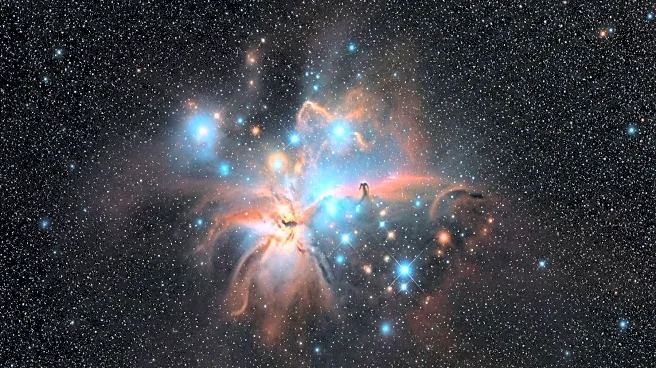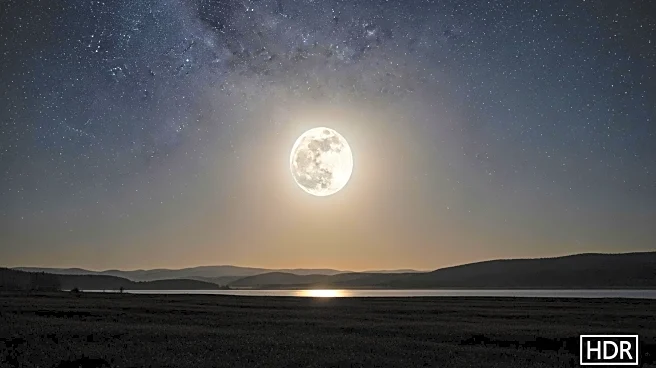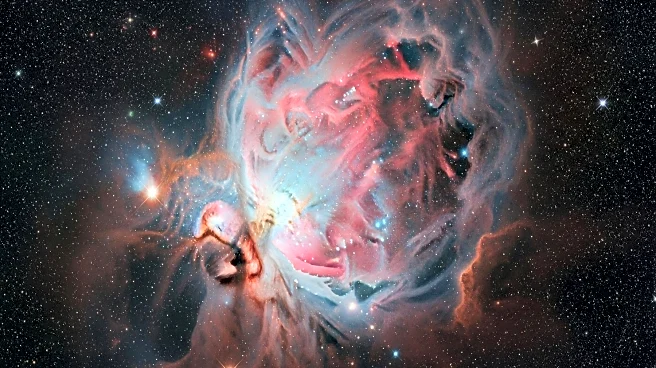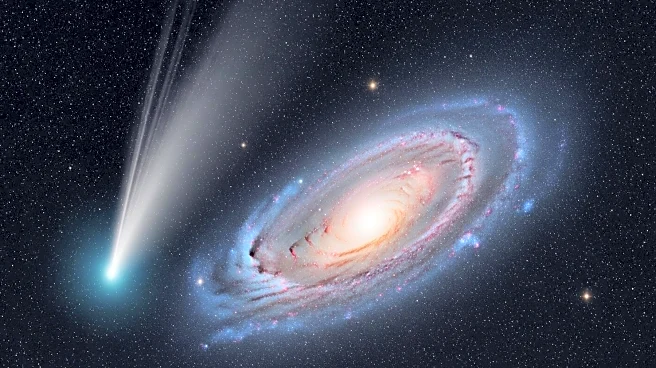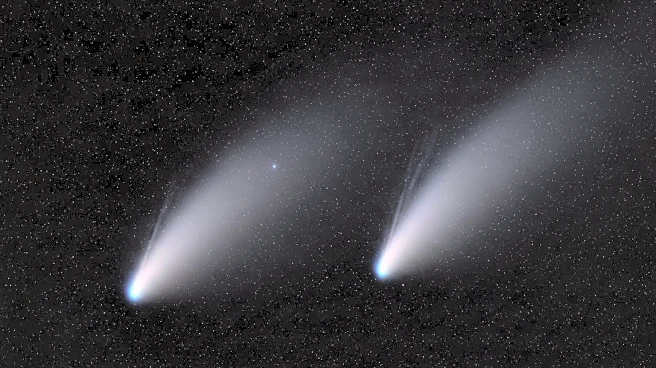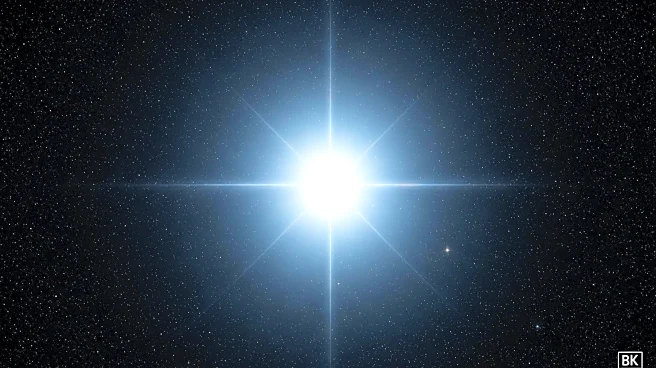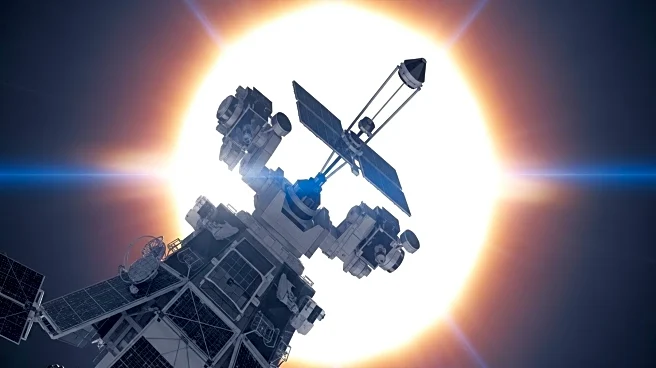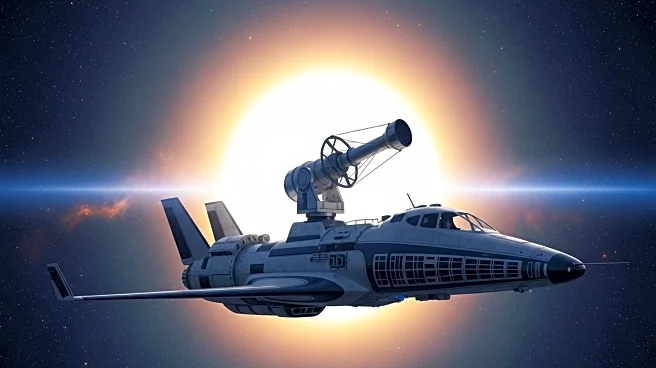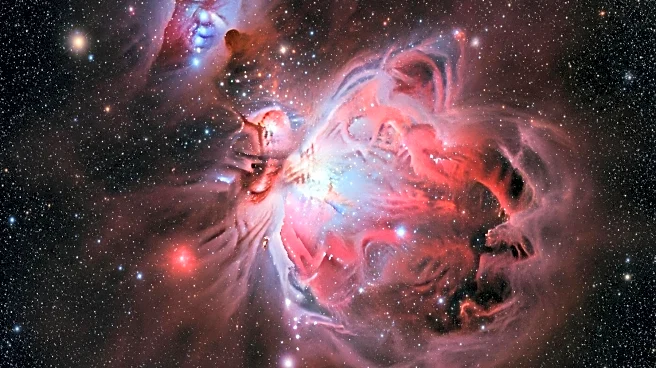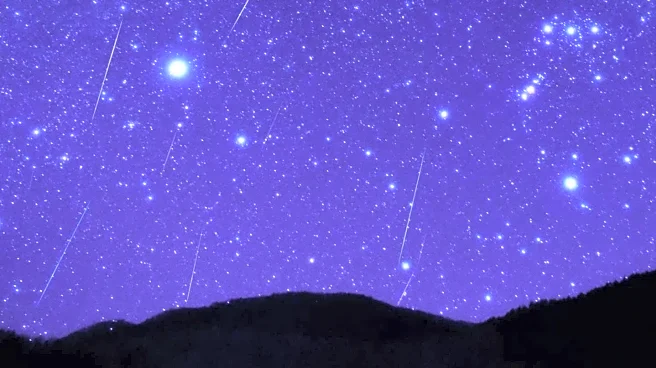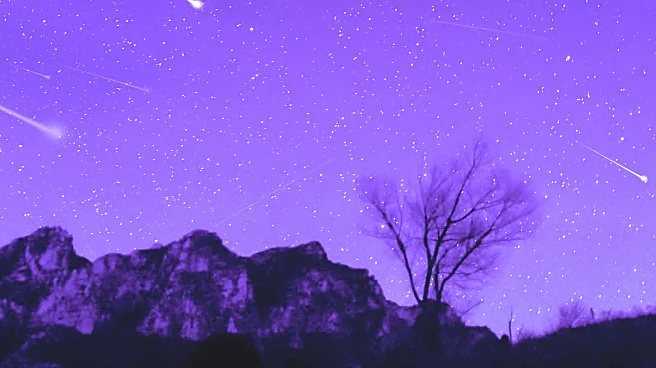What is the story about?
What's Happening?
The Hubble Space Telescope has captured a detailed image of the Large Magellanic Cloud (LMC), a satellite galaxy of the Milky Way. This observation highlights star clusters, which are gravitationally bound groups of stars formed from the same molecular cloud. The LMC, located about 150,000 light-years from Earth, is an irregular galaxy visible from the Southern Hemisphere. The image focuses on the N11 region, the second-largest star-forming area in the LMC, combining data from Hubble's Advanced Camera for Surveys and the Wide Field Camera 3. This observation aids astronomers in studying stellar evolution and the interaction between stars and interstellar gas and dust.
Why It's Important?
The Hubble Space Telescope's observations of the LMC provide critical insights into the processes of star formation and galactic evolution. By studying the LMC, astronomers can compare its stars and chemical makeup with those of the Milky Way, offering a unique perspective on how different environments affect stellar and galactic development. This research is vital for understanding the broader mechanisms of the universe, potentially influencing future astronomical studies and theories about galaxy formation and evolution.
AI Generated Content
Do you find this article useful?
